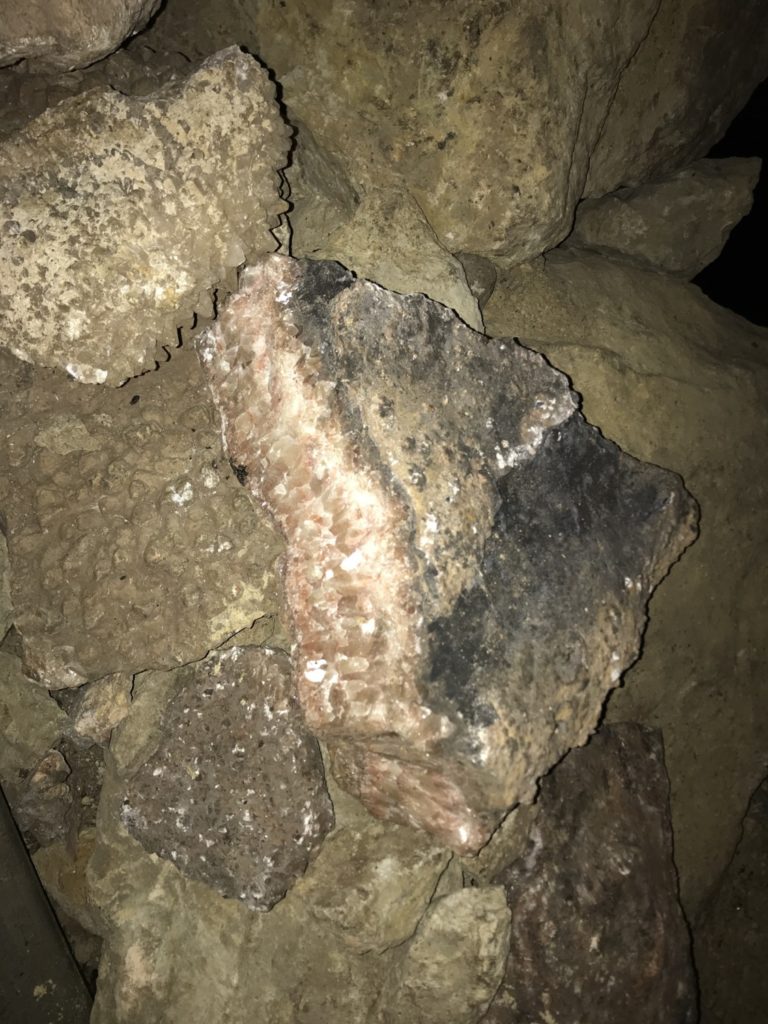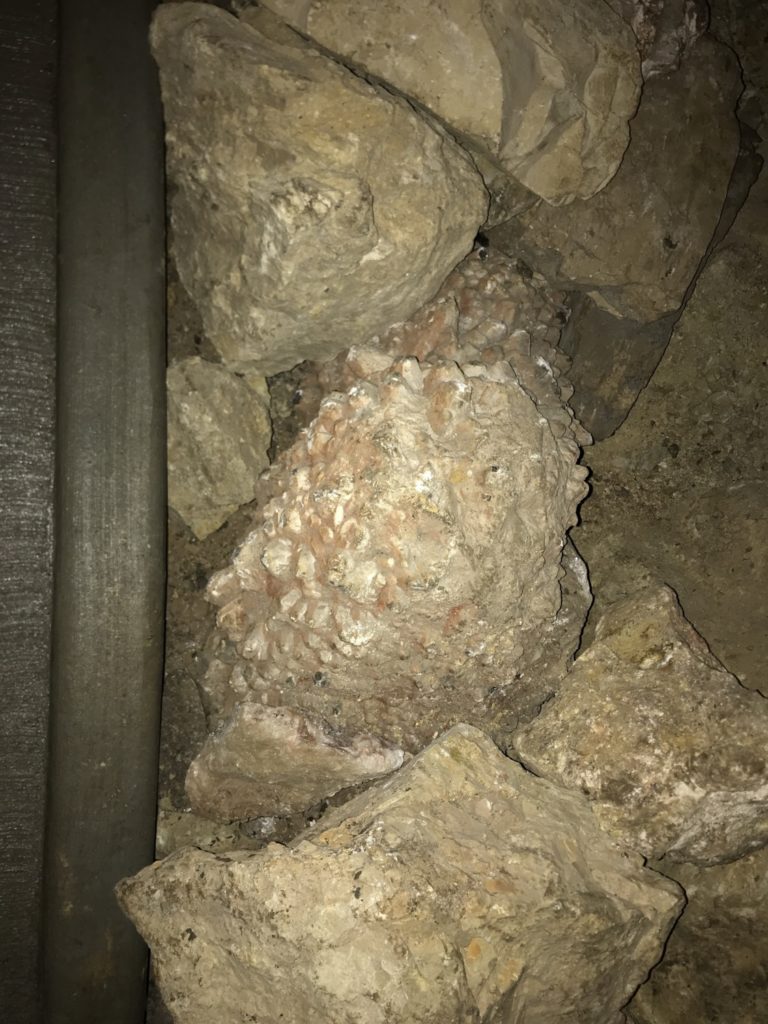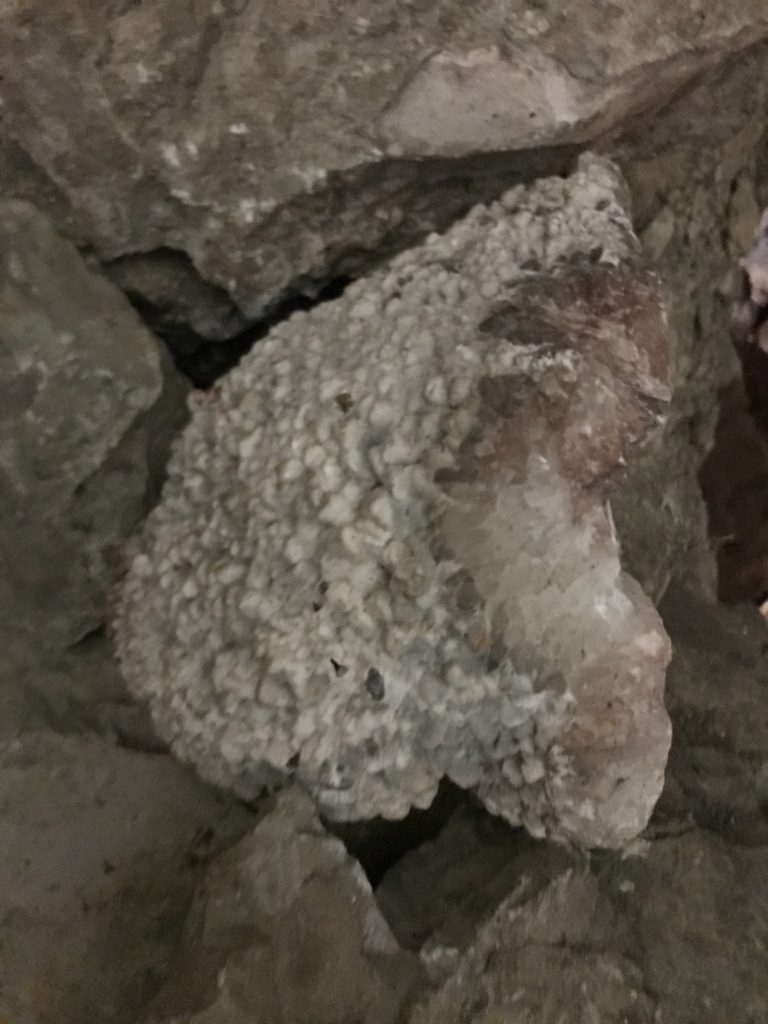After Tom and I visited Wind Cave National Park, we headed for Jewel Cave National Monument. Jewel Cave is 17 miles from Wind Cave and is the same kind of dense cave formation with the same air pressure atmosphere. The two caves may be connected, but no one has found the connection so far.
Jewel Cave National Monument is similar to, but smaller than, Wind Cave National Park. The cave itself is longer and is currently listed as the third longest cave in the world. Jewel Cave has 1,000 acres of land while Wind Cave has 33,000. But both of their caves have the same dense structure.
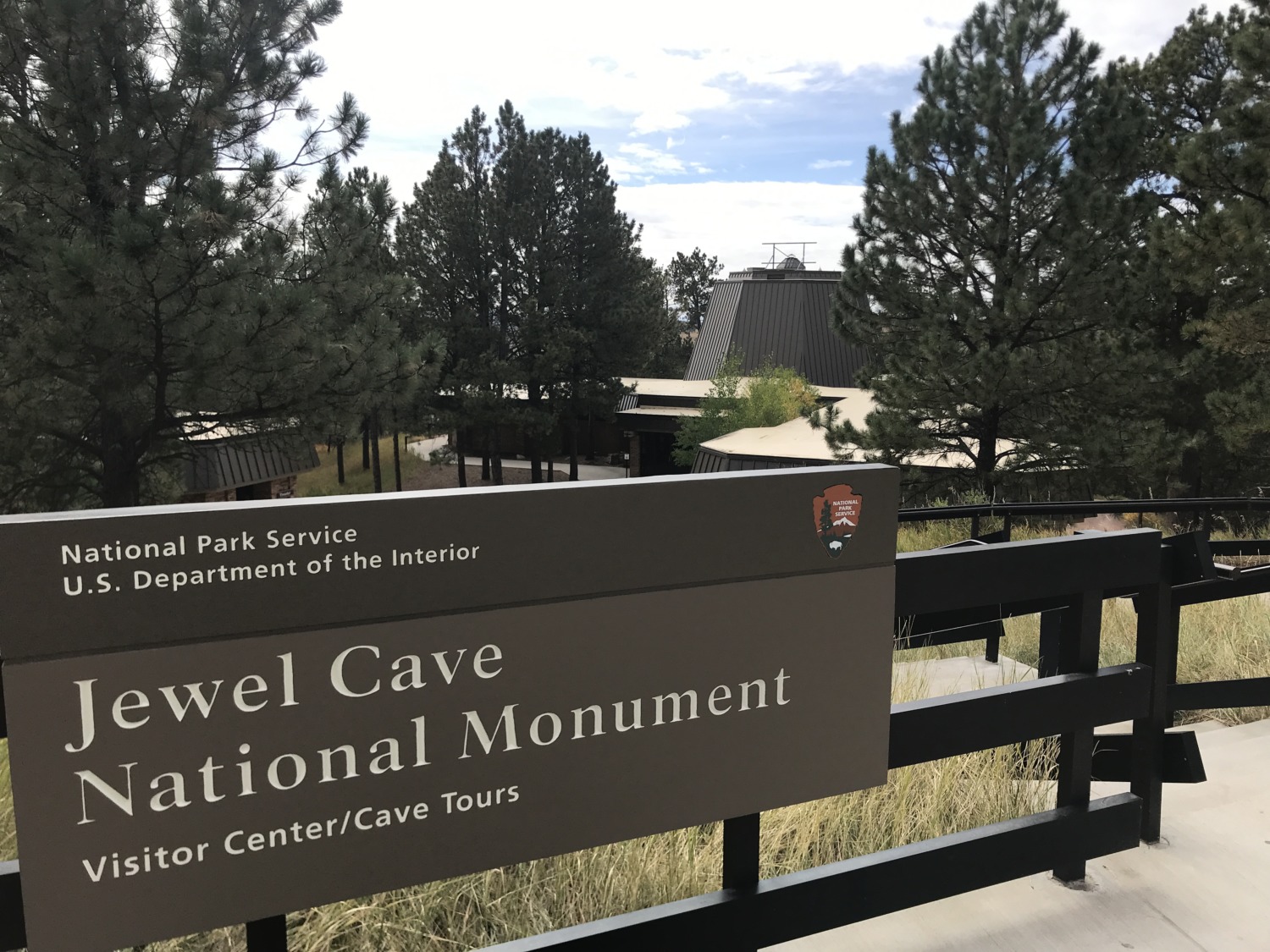
Jewel Cave has fewer visitors than Wind Cave. People are more interested in visiting a national park than a national monument, but Tom and I found it just as interesting. In fact, the movie and the museum were more interesting. The museum had more of the geology of the cave system and the movie talked more about the people who explored the cave. It also showed parts of the cave that most visitors don’t get to see.
Frank and Albert Michaud, two local prospectors, discovered the cave in 1900, when they felt cold air blowing out of a small hole in a canyon. Their first instinct was to get dynamite to enlarge the hole. After entering through the enlarged hole, the Michaud brothers found a cavern lined with calcite crystals, which led them to name it “Jewel Cave”. Although they tried to capitalize on their find, the cave was not a commercial success. In 1908, President Theodore Roosevelt proclaimed Jewel Cave a National Monument.
As recently as 1959, less than 2 miles of passages had been discovered. That year, however, Herb and Jan Conn, local rock climbers, began exploring, and within two years had mapped 15 miles. By 1979 the Conns had mapped more than 64 miles. Today more than 200 miles of the cave has been explored.

Tom and I took the last tour of the day, the 2:30 Modified Discovery Tour. The elevators were being repaired, so the people on the tour had to hike down the canyon to the entrance and then back up again after the tour. We accessed the cave through the maintenance entrance. Tom and I did not know, at the time, that we were there on the last day they would offer tours until the elevators were repaired. We entered through the airlock and then entered a huge room with a concrete floor.
Our ranger guide pointed out the different jewel formations in the room. The room is two stories tall with an upper section that can be reached on a different cave tour. The room felt a little like the lobby of a grand hotel with an atrium in the center. We could look up and up. Although the calcite formations were pretty, we were only able to see the one large room. The ranger gave us her full talk and then led us out of the single room.
Tom and I are competitive hikers, so we took off back up the canyon as soon as we left the cave. It was a lot of up, however, and I had to stop to catch my breath a few times. Two people passed us, a father and his teenage son, but we stayed ahead of everyone else. The hike up was really pretty with lots of trees and several overlooks.
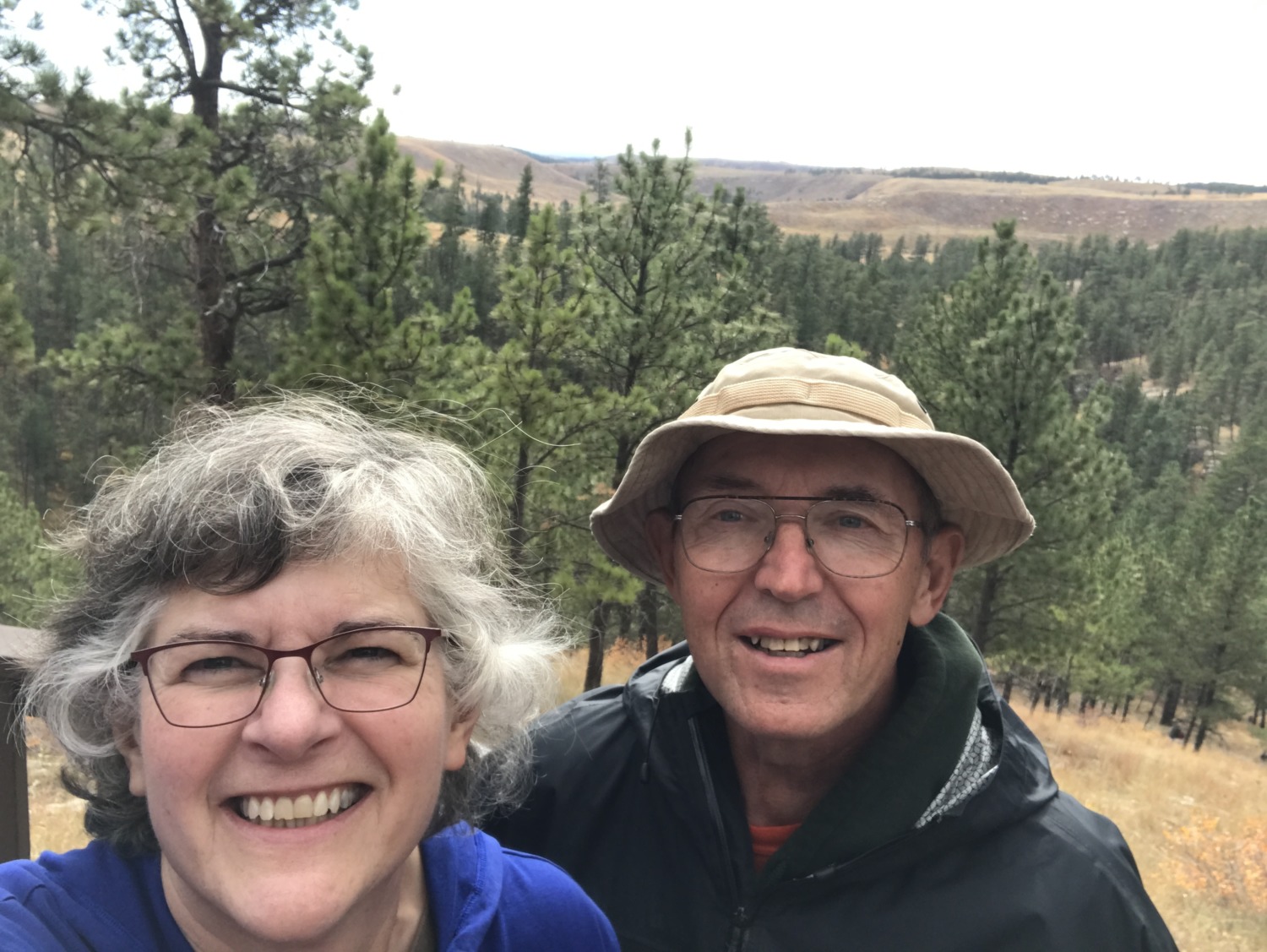
The park has a 3.5 mile canyon hiking trail in addition to the trail that goes into Hells Canyon. There is also a historic cabin – the first ranger station built by the Civilian Conservation Corps in 1935. The historic area was closed when we were there.
Two towns on either side of Wind Cave are worth mentioning. Hot Springs, South Dakota is south of Wind Cave and looks like a northern equivalent of Hot Springs, Arkansas. Charming Bed and Breakfasts with old restaurants and spas dot the town. Hundreds of people were out walking around, exploring the shops when we went through. Custer, South Dakota, is north of Wind Cave and east of Jewel Cave. It is a newer and flatter version of a tourist town. It has several chain restaurants and hotels, as well as more recent local restaurants. Either town would be a good place to stay if you are visiting the Black Hills.
We enjoyed our visit to Jewel Cave National Monument. It is an interesting area to explore.

